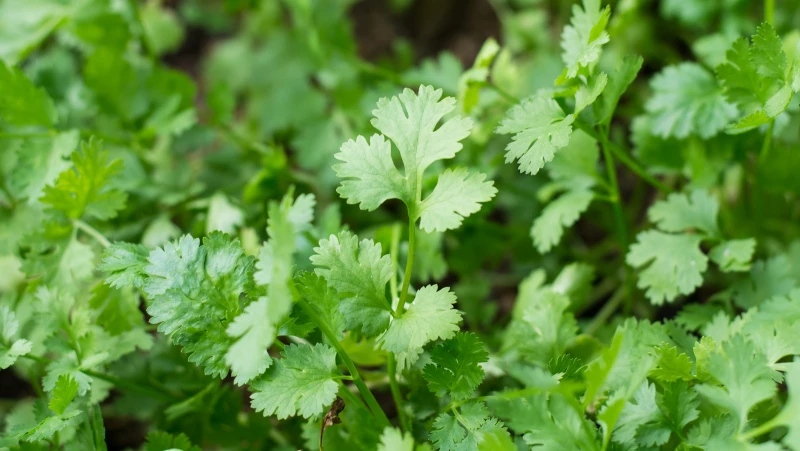Cilantro, a versatile cool-season herb, adds beauty to flower gardens and thrives in containers. Unlike woody herbs such as lavender and sage, cilantro easily grows from seed, making it a cost-effective addition to your herb garden. Planting seeds in planters or bare spots in the garden in early spring is a simple way to enjoy this multi-functional herb. Pairing cilantro with pansies in a planter creates a lovely display, especially as it begins to bolt. While the taste of home-grown cilantro may turn bitter after flowering, the plant still provides numerous benefits. The flowers attract pollinators and can be a delicious addition to salads. Additionally, leaving the blooms in the garden allows them to produce seeds that can be harvested as the spice coriander.
Cilantro, known for its aromatic leaves, can also offer benefits when it blooms. As the plant bolts and produces tall stalks with delicate white flowers, it becomes a valuable resource for native bees. These tiny pollinators are attracted to the nectar in cilantro blooms, helping in the transfer of pollen between plants.
By allowing your cilantro to bolt, you not only support the local bee population but also get to witness the beauty of these new visitors in your garden. Additionally, other insects like swallowtail butterflies may be drawn to the blooming cilantro, enhancing the biodiversity of your outdoor space.
After the cilantro bolts, it produces seeds that can be collected for future planting. This seed production phase allows you to save seeds for the next growing season or share them with fellow gardeners. While the leaves may lose some of their flavor after bolting, the flowers can still be used to add a mild cilantro taste to dishes and serve as a decorative garnish.
Once the vibrant flowers have withered away, cilantro transforms into small, spherical green seeds known as coriander. These seeds can be sprinkled into soups or salads to add a burst of flavor, or left to dry on the plant. For those looking to save seeds for future planting, it is recommended to wait until they are fully dried and naturally detach easily. This will ensure optimal germination rates. Personally, on days when I'm feeling a bit lazy, I prefer to leave the stalks in the garden or planter, allowing the plants to self-seed. As a result, they sprout anew in the autumn with the arrival of cooler temperatures, granting me a second harvest to savor until the onset of the first frost.
For a convenient method of preserving seeds for my garden or culinary endeavors, I gather the dried stalks when the seeds are ready. Placing the stalks upside down in a paper bag, I secure the top with a rubber band. By vigorously shaking the bag, the seeds easily detach. Those earmarked for planting are stored in labeled paper bags, indicating the seed variety and harvest year. Meanwhile, seeds designated for cooking purposes find a home in a glass jar within my pantry, ensuring they remain dry and readily accessible.







